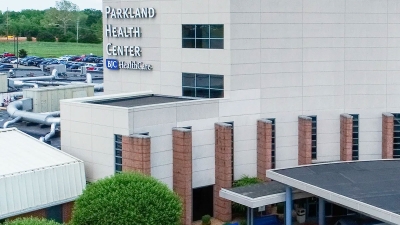What is nuclear medicine?
Nuclear medicine is a specialized area of radiology. It uses very small amounts of a radioactive substance (radionuclide or radio-tracer) for health research, diagnosis, and treatment of various conditions, including cancer. Nuclear medicine imaging is a mix of many different disciplines. These include chemistry, physics, mathematics, computer technology, and medicine.
Soft tissue, such as intestines, muscles, and blood vessels, is hard to see on a standard X-ray unless a contrast agent is used. This agent allows the tissue to be seen more clearly. Nuclear imaging shows organ and tissue structure as well as function. The extent to which a radionuclide is absorbed, or "taken up," by a certain organ or tissue may even show how well the organ or tissue is working. So, while diagnostic X-rays are used mainly to study anatomy, nuclear imaging is used to study organ and tissue function.
A tiny amount of the radionuclide is used during the procedure. The radionuclide is also known as a radiopharmaceutical or radioactive tracer. It is absorbed by body tissue. There are several different types of radionuclides. These include forms of the elements technetium, thallium, gallium, iodine, and xenon. The type of radionuclide used will depend on the type of study and the body part being checked.
After the radionuclide has been given and has collected in the body tissue under study, radiation will be given off. A radiation detector can pick up this radiation. The most common type of detector is the gamma camera. Digital signals are made and stored by a computer when the gamma camera detects the radiation.
With a nuclear scan, the healthcare provider can assess and diagnose many conditions, such as tumors, infections, or organ enlargement. A nuclear scan may also be used to check organ function and blood circulation.
The areas where the radionuclide collects in greater amounts are called "hot spots." The areas that don't absorb the radionuclide are called "cold spots." These look less bright on the scan image.
In planar imaging, the gamma camera stays still. The resulting images are 2-D. Single photon emission computed tomography (SPECT) makes detailed images of an organ as the gamma camera moves around you. These images are like those done by a CT scan. In certain cases, such as PET scans, 3-D images can be done using the SPECT data.
Nuclear scans are used to diagnose many health problems. Some of the common tests are:
- Renal scans. These look at the kidneys. They may find problems with function or an obstruction in blood flow.
- Thyroid scans. These check how the thyroid is working. Or they may look at a thyroid nodule or mass.
- Bone scans. These can check the joints for arthritis. They may also find problems in the bones, such as diseases, tumors, or the cause of pain or inflammation.
- Gallium scans. These can diagnose infectious or inflammatory diseases, tumors, and abscesses.
- Heart scans. These can spot problems with blood flow to the heart. They can also gauge how well the heart is working and figure out the extent of damage to the heart after a heart attack.
- Brain scans. These check for problems in the brain or the flow of blood to it.
- Breast scans. These are often used with mammograms to find cancer in the breast.
Nuclear medicine is used to treat various health conditions. These include hyperthyroidism, thyroid cancer, lymphomas, and bone pain due to certain cancers.
How are nuclear medicine scans done?
Nuclear medicine scans may be done on many organs and tissues of the body.
A nuclear medicine scan has 3 phases:
- Giving the tracer (radionuclide)
- Taking images
- Interpreting the images
The amount of time from giving the tracer and then taking the images may range from a few minutes to a few days. The time depends on the body tissue being looked at and the tracer being used. Some scans are done in minutes. For others, you may come back a few times over several days.
To give an example of how a nuclear medicine scan is done, here is the process for a resting radionuclide angiogram (RNA) scan. This is a type of heart scan.
Each facility may have certain protocols in place. But a resting RNA often follows this process:
- You will be asked to remove any jewelry or other objects that may interfere with the procedure.
- If you are asked to remove clothing, you will be given a gown to wear.
- An IV (intravenous) line will be started in your hand or arm.
- You will be connected to an electrocardiogram (ECG) machine with electrodes (leads). A blood pressure cuff will be attached to your arm.
- You will lie flat on a table in the procedure room.
- The red blood cells will be "tagged." To do this, the radionuclide may be injected into the vein. Or a small amount of blood may be taken from the vein so that it can be tagged with the radionuclide. The radionuclide will be added to the blood. It will be absorbed into the red blood cells.
- After the tagging procedure, the blood will be returned to the vein through the IV line. The progress of the tagged red blood cells through the heart will be traced with a scanner.
- During the procedure, you must lie as still as possible. Any movement can ruin the quality of the scan.
- The gamma camera will be positioned over you. It will take images of the heart as it pumps blood through the body.
- You may be asked to change positions during the test. Once you change position, you will need to lie still without talking.
- After the scan is done, the IV line will be taken out. You will be able to leave unless the healthcare provider gives different instructions.



